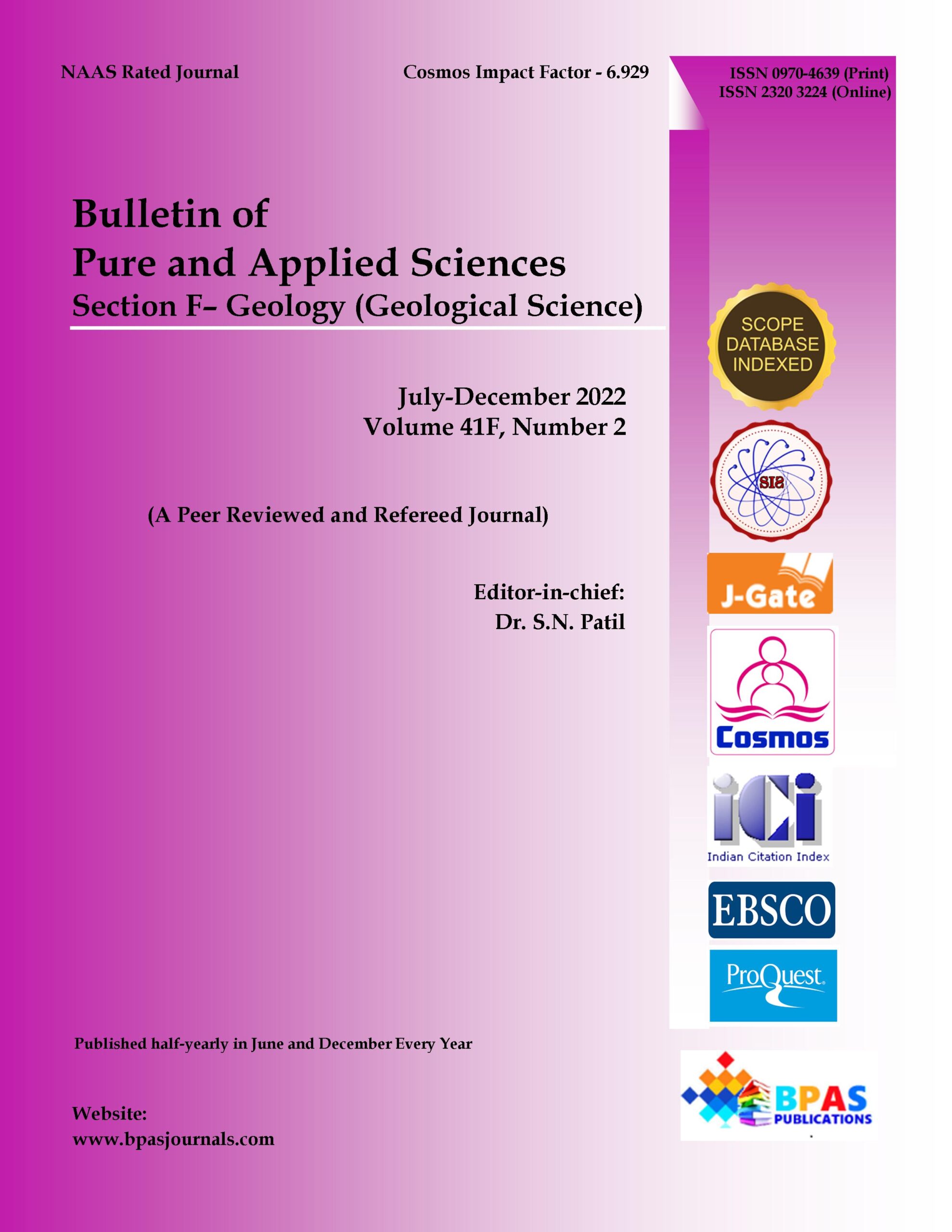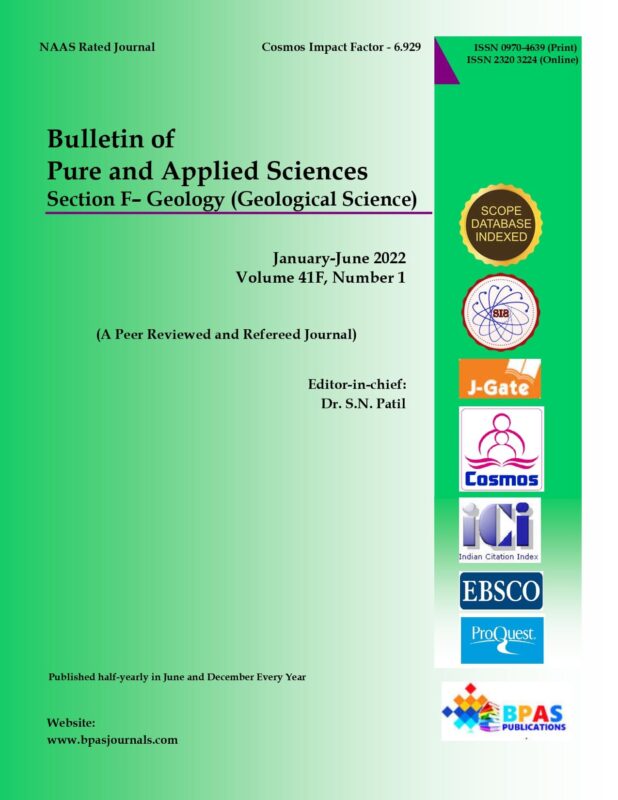Assessment of Flood Hazard Zone Using Remote Sensing & GIS – A Case Study of Panchganga River Basin, Kolhapur District, Maharashtra
9.38$
1A Supekar*, 2S Patil
Bulletin of Pure and Applied Sciences.
Geology (Geological Science), Vol.41F, No.2,
July-December 2022: P.164-181
DOI: 10.5958/2320-3234.2022.00015.4
Original Article
Description
Assessment of Flood Hazard Zone Using Remote Sensing & GIS – A Case Study of Panchganga River Basin, Kolhapur District, Maharashtra
1A Supekar*, 2S Patil
Author’s Affiliations:
1,2Department of Geology, Savitribai Phule Pune University, Pune 411007, Maharashtra, India
*Corresponding Author: A Supekar, Department of Geology, Savitribai Phule Pune University, Pune 411007, Maharashtra, India.
E-mail: ashwinis@unipune.ac.in
(Received on 15.02.2022, Revised on 14.05.2022, Accepted on 11.06.2022, Published on 15.12.2022)
How to cite this article: Supekar A., Patil S. (2022). Assessment of Flood Hazard Zone Using Remote Sensing & GIS – A Case Study of Panchganga River Basin, Kolhapur District, Maharashtra. Bulletin of Pure and Applied Sciences- Geology, 41F(2), 164-181.


